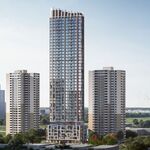JayBeeGooner
Active Member
It's a good thing that almost nobody riding the Sheppard or Finch LRTs will have to walk 500m along Finch or Sheppard. The median walking distance is 250m. The average human can walk approximately 1.4 metres per second. That means that the median walking time to stations along Sheppard/Finch will be 178 seconds. Do you really think 178 seconds is too long of a walk?
It's 350 sec(250*1.4). You just made up some number. 350 secs is 5.5minutes.
Hardly. The TC lines are "rapid transit". The spacing between stations should be far beyond that of bus stop spacing. I've been in cities where their busses stop less often than the TC "rapid transit" lines.
That's awesome. The projected 65,000 riders will think otherwise. And I've been to cities where the stop spacing is 300-400 metres, and every stop is heavily used. Again, stop spacing determined by demand. Not some arbitrary definition of rapid transit.






